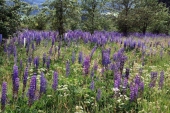Miles: Thanks for explaining the flags, and for helping with another! I like to think the represent how EXCITED I am for this whole mess.
Johnny:
There are a lot of great programs and grants for folks to aid with cleanup and rebuilding. Sadly, we do not qualify for any of them because we didn't own the place before the flood. That's ok, it will all go to help those
in need. In the meantime, we've found a great excavator guy with more than reasonable rates and high recommendations from folks in town. We DO qualify for roadside debriw pick up, which runs through spring, and the conty want's people to get as much debris out of the way of spring thaw as much as possible! I will, however, double check on debris removal regulations and if wood chips will be a problem.
As for seeding, I've been looking at
http://www.westernnativeseed.com, specifically the Montane Mix
http://www.westernnativeseed.com/Mmixes.html We are at around 6500 feet. I was told by the folks that used to live in the canyon that the growing season is two weeks shorter than down the road. Good news is that for a canyon, it gets a lot of sun! And we have experience some of that wind. Until we live there, we won't have a good idea of exactly the wind is gonna do.
I moved to the area a couple years ago to be with my fiance, who has been here for 12 years. In the winter, it was so windy! I remarked on it and he said "Yeah, it's pretty windy in the winter." In the spring, there was some wind. I said so. "Yeah Colorado gets some wind in the spring!" By fall, I'd realised that it's just plain windy when it wants to be, and I beat up my fiance.
Mike: I love those boulders! They are beautiful and I want them all inside my house. : D I hope I can use them smartly.
I don't mind scattered gardens, the whole place is rather scattered just because of the layout of the land. A county road runs through the middle of it so we have to cross the street every time just to get to the creek side. I think it might be helpful for the continuation of this thread to show the survey. It's a large file, even re-sized:
http://dl.dropboxusercontent.com/u/1629405/landsurvey.jpg
So, everything in bold is ours, even that little mining strip to the south east. That little parcel in the north corner? There is an old, updated cabin leftover from the townsite. We've been talking with the folks who own it, such wonderful folks! and we are in the process of purchasing it so we can actually live on our land. Flood plain and elevations are nicely indicated, too. Also of note, we are surrounded, for the most part, by National Forest.
The spring house, Building 19.6 x 14.8 is right by where we'd like to rebuild, so I am not sure about trying to do much gardening there aside from keeping wood chips and growing plants moist. I understand, and could be wrong, that the spring is our domestic well, thus the water source we can use for out door animals. We are still trying to puzzle through our water rights. Even the help of a water lawyer didn't clear that one up!
Thank you, Mike, for your encouragement! I have a short term plan with nebulous long term ideas. Something will emerge from this inchoate mess.
Cam: Your plant list is wonderful! You know, just last night I randomly chose mountain mahogany from the Western Native Seed site to read about. What a coincidence you mention it! And your links are amazingly useful. Good to know. I just took a read about Black Locust and see why you put some pants on. ;3 Is the forum divided on that subject? Regardless, thank you for your advice and resources. I will add them to my research.
I think I have a pretty solid game plan to get started.
• Demo the house in about three weeks, maybe more.
• Salvage materials.
•Move the debris piles to the road wood chipping/firewooding as much as possible.
•Spread Wood Chips, especially near springs
•Inoculate everything in the world
•Scatter seed(balls?) for fast growing nitrogen fixers
•Build hugels, at least by the house
•Begin a simple kitchen garden for this year
Please feel free to critique or suggest otherwise! Thanks again ya'll.
































 1
1




 to help with that. Also, any other fast-growing deciduous shrubs/trees/bushes would help. I say deciduous because you'll get more OM in the soil at leaf drop.
to help with that. Also, any other fast-growing deciduous shrubs/trees/bushes would help. I say deciduous because you'll get more OM in the soil at leaf drop.















